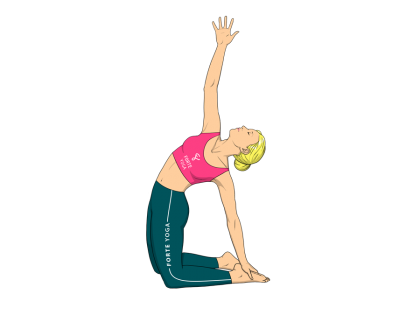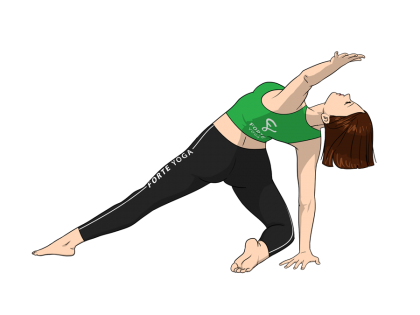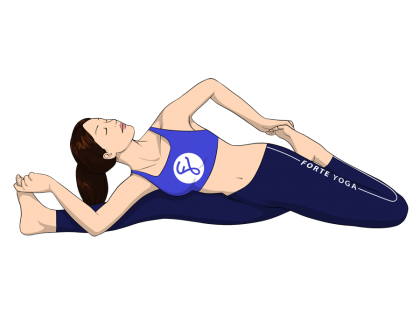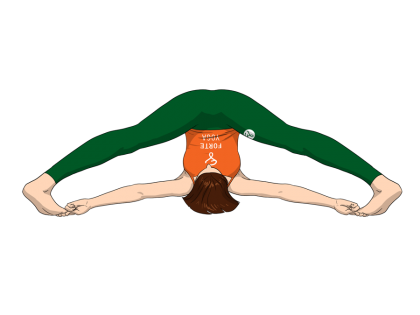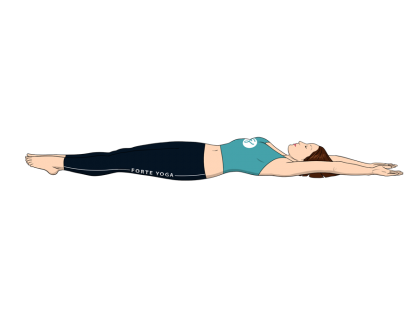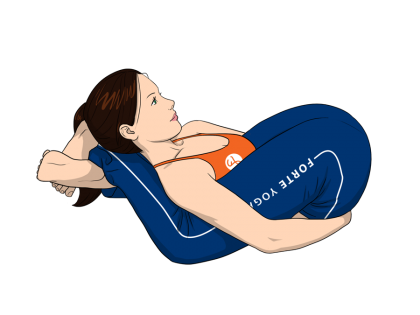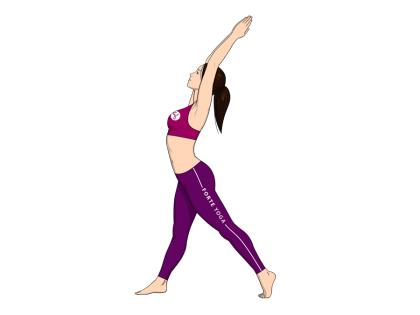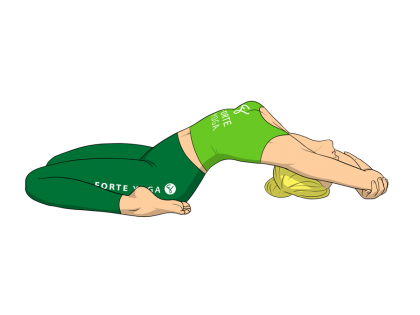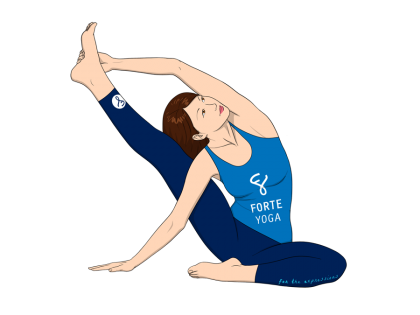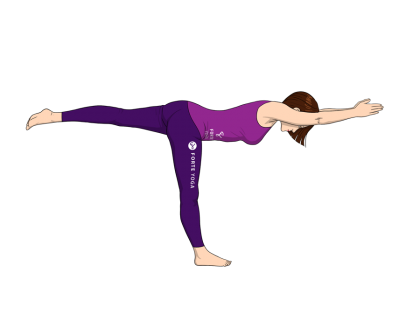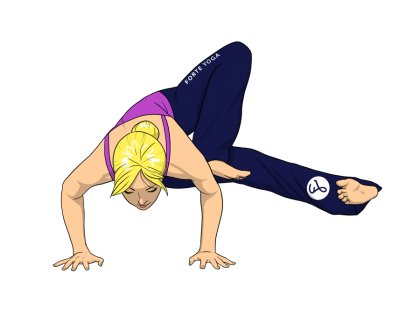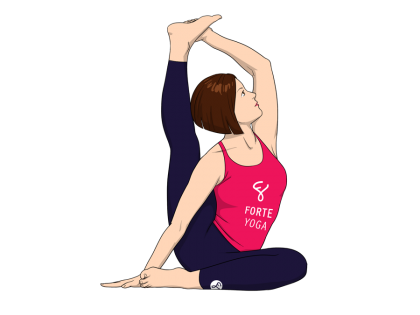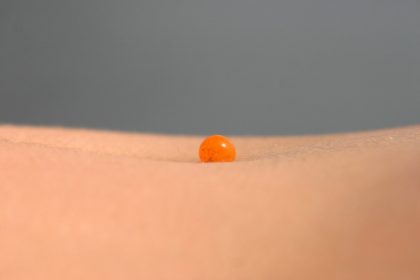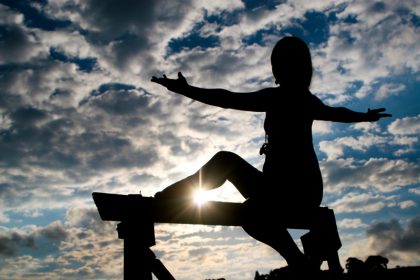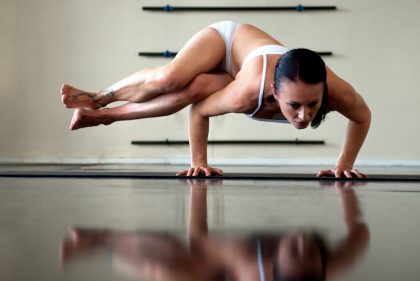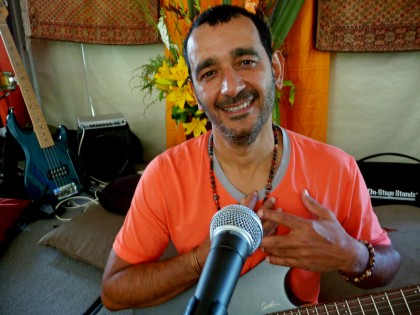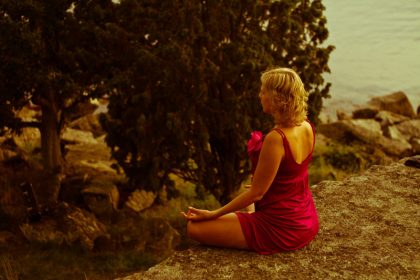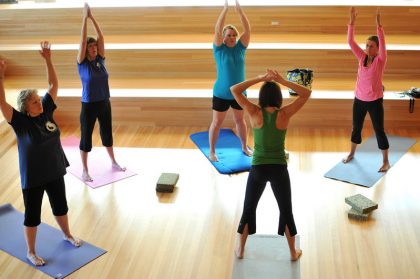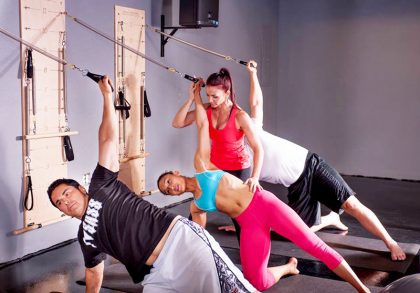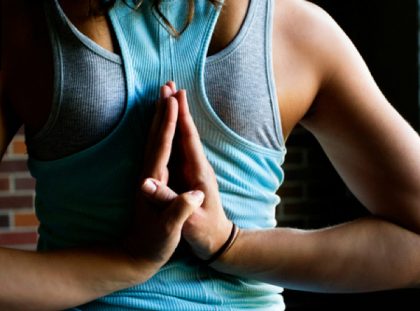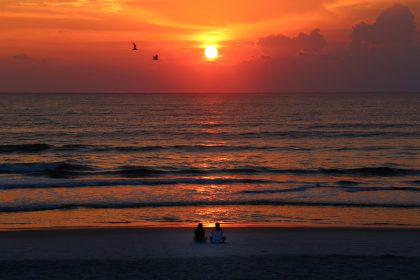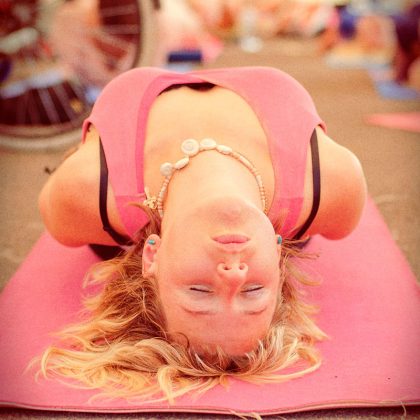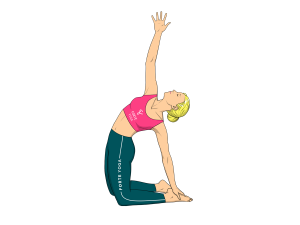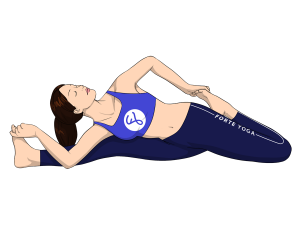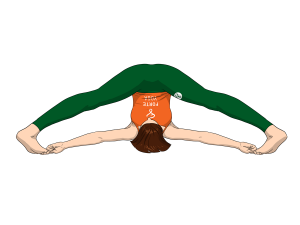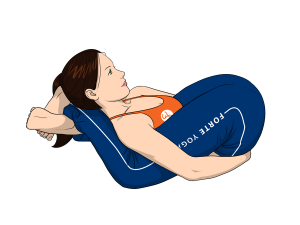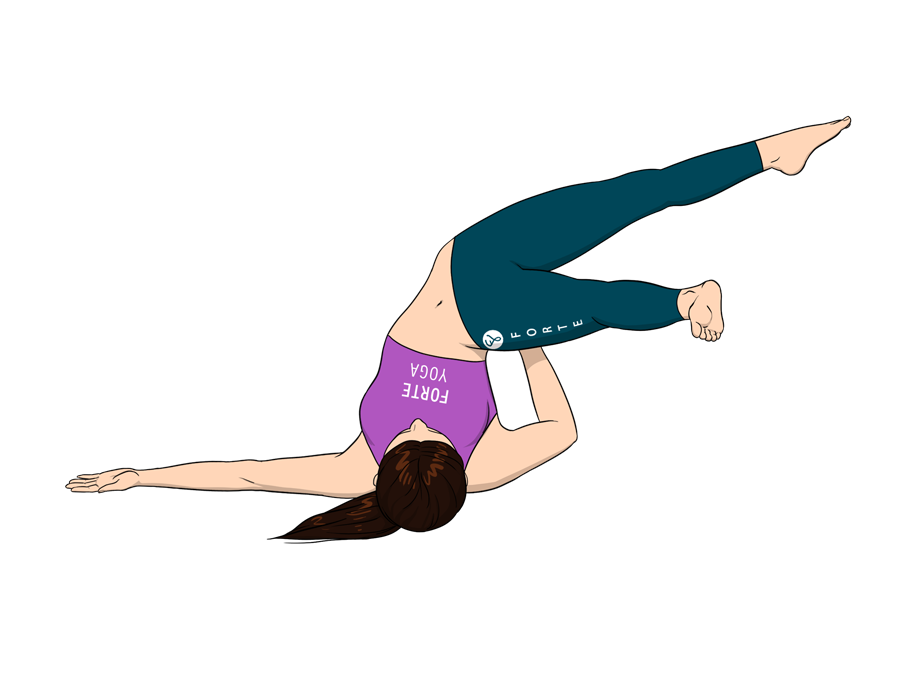
Open Leg Side Shoulderstand Yoga Pose is an inversion pose that targets the shoulders and hamstrings and is ideal for yogis and yoginis at an advanced level.
 visuddha – the throat chakra
visuddha – the throat chakra[yoga-sharrre]
- Begin by entering the Supported Shoulderstand (Salamba Sarvangasana). When you feel stable in this position, exhale and twist both legs together 45 degrees to the right so that the quads and abs are facing out to the left, lowering them slightly.
- Keeping both forearms and elbows firmly planted on the floor, shift your weight onto the right hand. When you feel stable, lay your left arm out perpendicular to your torso, pressing your left hand into the floor to help keep yourself balanced. Be sure that your shoulders and forearms are still pressed into the floor; if you feel your shoulder beginning to lift, actively push your shoulders and forearms into the floor or mat.
- Extend out through the legs and point out the toes, taking deep steady breaths, tops of the feet facing up toward the ceiling. Exhale and open the legs by sweeping the right leg away from the left, creating an angled V shape with them.
Rotate the right leg outward, bringing the top of the leg toward the floor. Extend through the back of the leg, pushing out through the ball of the foot. Keep the left leg stationary. As you press into the forearms and shoulders for support, be sure to keep your shoulders from pushing up around the neck and ears. - Hold this pose for a few breaths, increasing to 30 seconds or more if possible. This position is very difficult to hold so do not push the limit, which can lead to collapsing on the neck and shoulders. To come out of the position, release your left foot and begin to lift both legs back upright, placing both hands on your back for support. Return to the Supported Shoulderstand and repeat with the right leg.
- Breathe deeply through each step.
- This pose requires balance and can be very difficult to hold. It should not be attempted if the Supported Shoulderstand is new or difficult for you.
- Of the Shoulderstand Variations, this is one of the easier ones. Try performing this one before attempting others, such as the Half Lotus or Half Frog Side Shoulderstands.
- Both arms will be supporting weight in the elbows and wrists. Come out of the pose if you feel these areas becoming strained.
- Avoid this pose if you have back, shoulder, elbow, wrist or hip injury.
- Avoid this pose if you have high blood pressure (hypertension), low blood pressure or are pregnant.
Be sure to read the Tips and extra information for the Supported Shoulderstand before attempting this pose. Reviewing the basics and re-familiarizing yourself with the cautions of the pose will help prepare you physically and mentally.
In order to avoid wrist discomfort or injury, try adjusting the placement of the supporting hand before lowering the other arm to the ground. The hand can be placed further to one side or moved toward the middle near the base of the tailbone. Try various positions until you find the position most comfortable for you.
All Muscles: Quads, hamstrings, calves, buttocks, abs, shoulders, neck, sides, lats
Target Muscles: Shoulders, calves, hamstrings
- Can help treat insomnia and fatigue.
- Can relieve stress, anxiety and mild depression.
- Can improve digestion.
- Stimulates thyroid and prostate glands.
- Improves focus and balance.
- Improves blood circulation and increases lung capacity.

